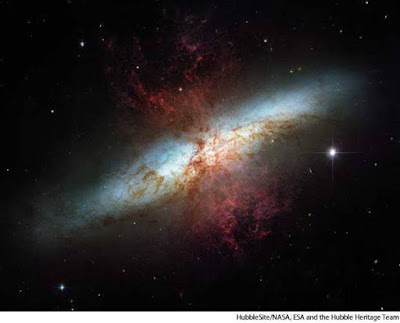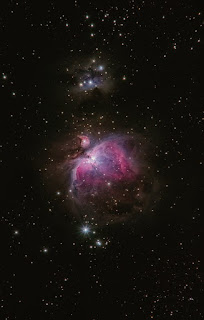Galaxy
GALAXY
A galaxy is a massive and gravitational bound system which is comprised of stars (like the Sun), stellar remnants (compact stars), an interstellar medium of gas and dust, as well as the important, but misunderstood, dark matter- a matter hypothesized to account for gravitational effects that appear to be the result of invisible mass.
NGC 4414, a typical spiral galaxy in the constellation coma Berenices, is about 55,000 light-years in diameter and approximately 60 million light- year from earth
Galaxies can range in size from a dwarf with as few as ten million stars to massive giant galaxies with a hundred trillion stars. Each star orbits its galaxies own center of mass and it is estimated that are more than 170 billion galaxies in the observable universe.
TYPES OF GALAXIES
Galaxies can be classified in several ways. The most common is a system developed by Edwin Hubble, which is based on the shapes of galaxies. The most beautiful galaxies are called spirals. The Milky Way is a spiral, and so is the Andromeda galaxy.
SPIRAL GALAXY
Spiral galaxies are easily identified by observing three components common to all spiral galaxies. A spiral galaxy has a disk, a bulge, and a halo. The center of the galaxy is like a nucleus, containing a sphere shaped bulge that houses old stars and is devoid of dust and gas. The circular shape of the galaxy composes the disk. The arms of the spiral galaxy originate in the disk and new stars will form in a galaxy.
The Sun in our galaxy is located in one arm and its starts are created in this portion of the galaxy, which contains the most the gas in the galaxy. This area is rich in blue stars. The Halo is a Spherical shaped collection of old stars and cluster known as globular clusters that is found in the outer edge of the galaxy.This stunning view of Spiral Galaxy Messier 74 from NASA taken with the Hubble Telescope shows a bright bulge in the center with the arms spiraling outward.
BARRED SPIRAL GALAXY
Barred spiral galaxies share the same features and function as regular spiral galaxies, but they also have a bar of bright stars that lie along the center of the bulge has very little activity here and contains mostly plder, red stars. The bar and arms have lots of activity including star formation.
While the classification for barred spirals is the same as it is for regular spiral galaxies, the bar must be considered as well. Short bars correlate to tighter galaxies and will be included in designation SBa. SBb have longer bars and SBc are the longest. Most astronomers now agree that the Milky Way is a barred spiral galaxy.
ELLIPTICAL GALAXY
Elliptical galaxies can be recognized by their elongated spherical shape and their lack of nucleus or bulge at the center. Although there is no nucleus, the galaxy is still brighter in the center and becomes less bright towards the outer edges of the galaxy. An elliptical galaxy can be nearly round or long and cigar shaped.
It is believed that a great deal of the mass in elliptical galaxy is due to the presence of a central black hole. These galaxies have very little activity and contain mostly old stars of low mass, because there aren’t the gasses and dust needed to form new stars.
IRREGULAR GALAXY
Irregular galaxies are composed of gasses, dust, stars, nebulous formations, neutron stars, black holes and other elements common to all galaxies. Irregular galaxies are named so because they have no definite shape, but like all galaxies, they are inconstant motion, moving Outward and away from the center of our universe. Irregular galaxies are divided into two classification: Im and IO
Im galaxies occur most often among irregular galaxies and may show a trace of the spiral galaxy arms. IO galaxies are completely random and can be called chaotic in nature. The Magellanic Clouds that border our own milky Way galaxy are example of Im galaxies. Approximately 20% of our galaxies are classified as irregular.







Comments
Post a Comment